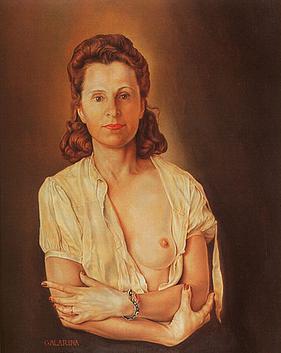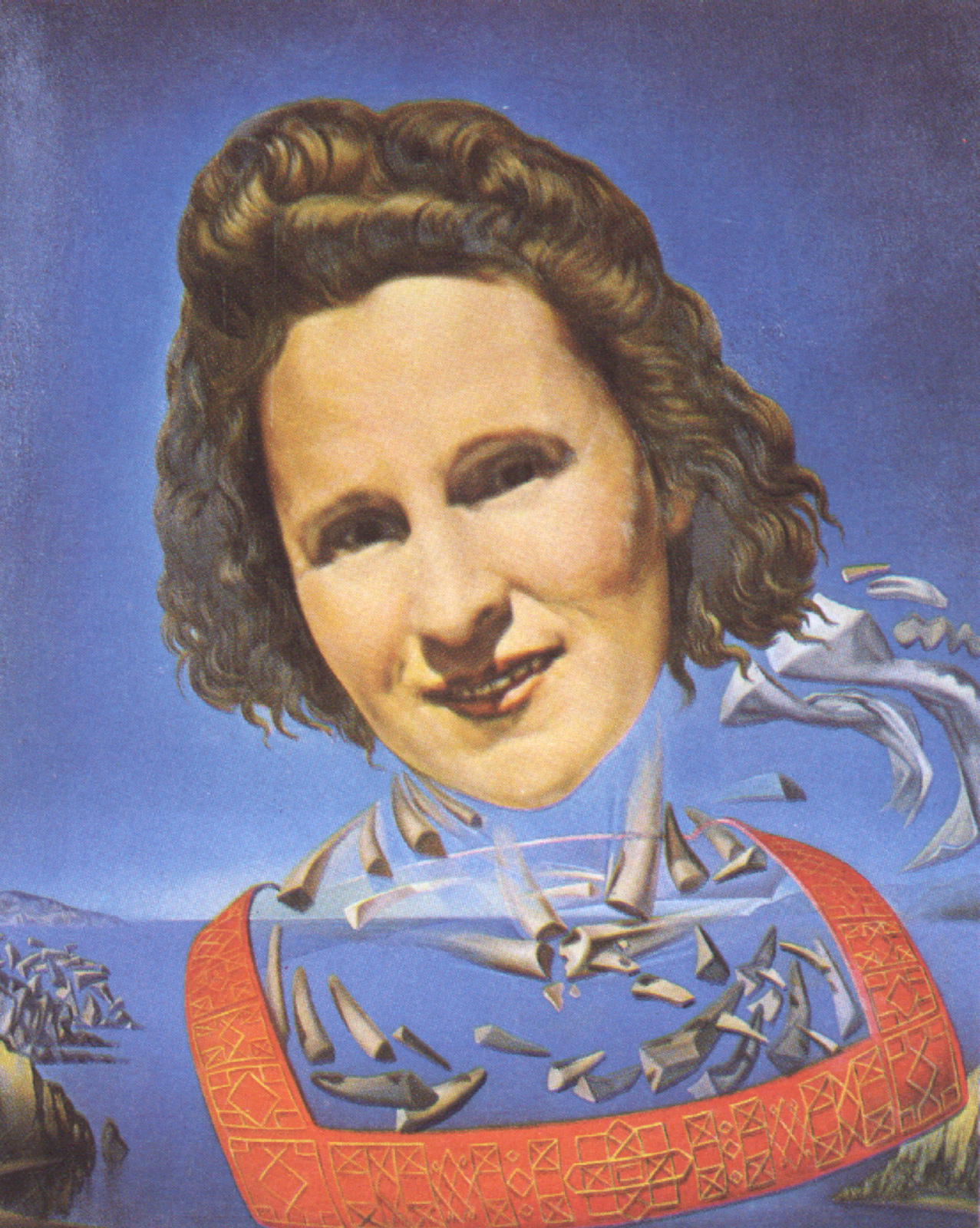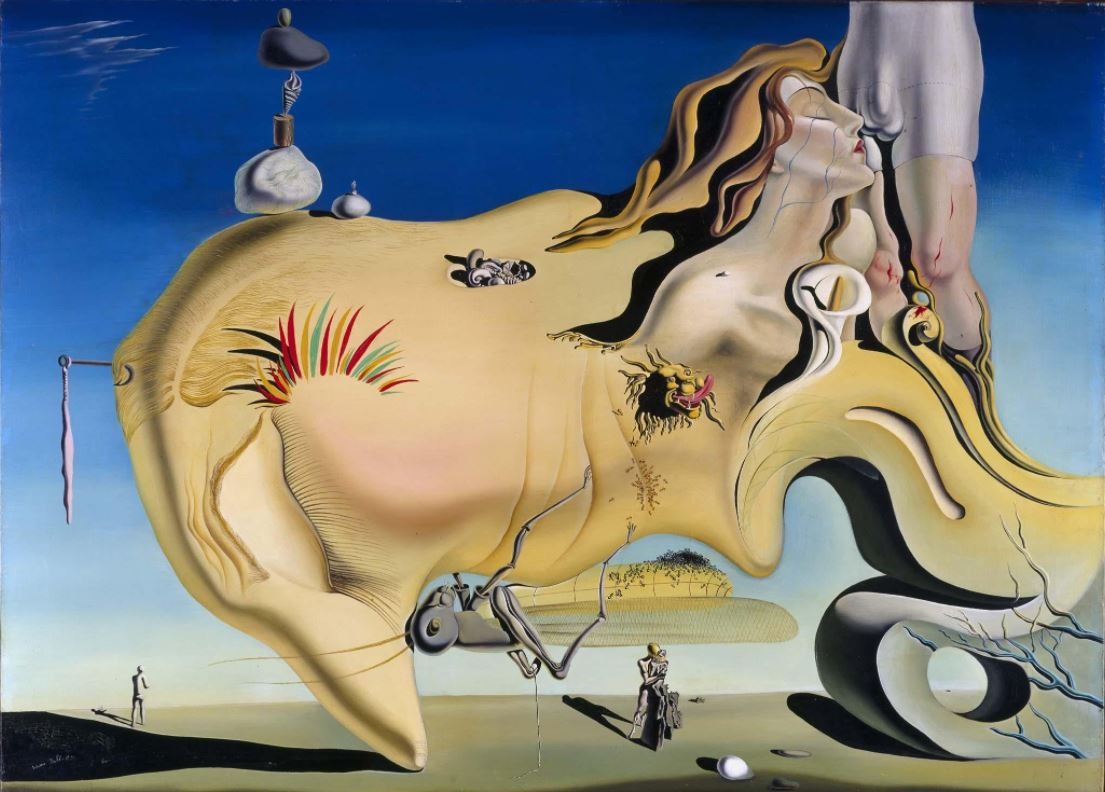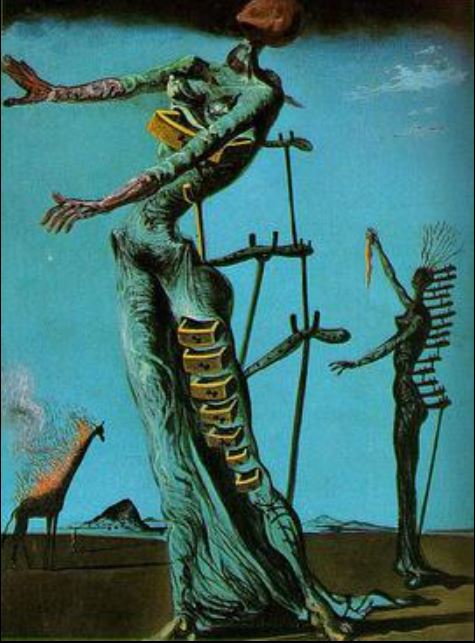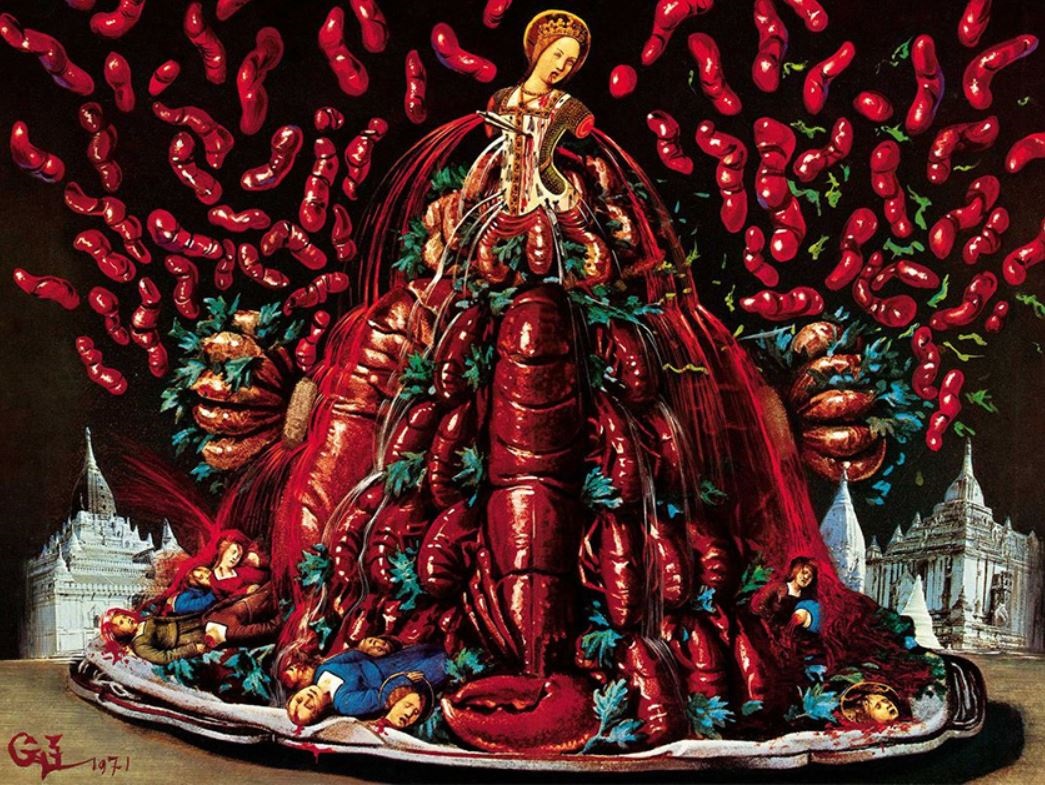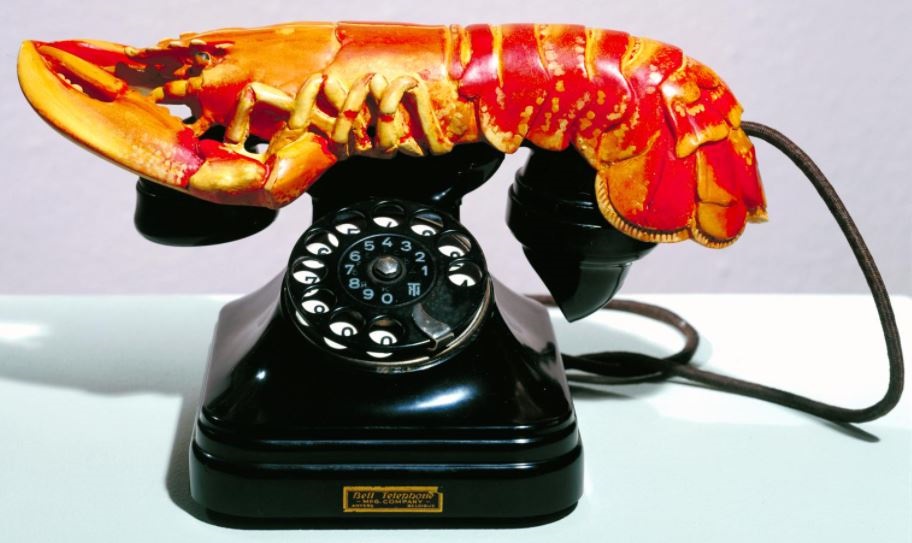| The Blank Canvas |
|
|
|
Home Leonardo Picasso Vincent Lautrec Munch Michelangelo Dali |
Dalí cheat sheet |
|
[Click or tap on any picture to make it bigger. Press the browser back button from within the enlarged image to return here. Select the Dalí menu item above to go back to the original dialogue.] |
"Teatre-Museu Dalí" (Dalí Theatre and Museum). Not paintings but photos of Café Gala at the Teatre-Museu Dalí in his home town of Figueres, Catalunya. The old theatre was damaged during the Spanish Civil War and remained in a state of ruin. In 1960 Dalí and the mayor decided to rebuild it to honour the town's most famous son. The museum opened on September 28 1974. A glass geodesic dome cupola crowns the stage of the old theatre; Dalí is buried in a crypt below the stage floor. The café is named after his wife (see the portraits below). "Galarina", 1944, Teatre-Museu Dalí, and "Portrait of Gala with Rhinocerotic Symptoms", 1954, private collection. Gala Dalí, Marchioness of Dalí de Púbol, was born Elena Ivanovna Diakonova in Kazan, Tatarstan, Russia. She became Dalí's muse; in the early 1930s Dalí started to sign his paintings with both their names as "it is mostly with your blood, Gala, that I paint my pictures". She was married before to French Surrealist poet Paul Éluard, then, after living together since their meeting on the Costa Brava in 1929, Gala married Dalí in a civil ceremony in 1934 and remarried in a Catholic ceremony in 1958 in the Pyrenean hamlet of Montrejic. With his purported phobia of female genitalia Dalí was said to have been a virgin when they met. Gala throughout her life had numerous extramarital affairs which Dalí encouraged since he was a practitioner of candaulism, a sexual practice or fantasy in which one person exposes their partner, or images of their partner, to other people for voyeuristic pleasure. In 1968 Dalí bought Gala the Castle of Púbol where she would spend time every summer from 1971 to 1980. He agreed not to visit there without getting advance permission from her in writing. "The Great Masturbator", 1929. Museo Nacional Centro de Arte Reina Sofía, Madrid. The painting may represent Dalí's severely conflicted attitudes towards sexual intercourse. In Dalí's youth his father had left out a book with explicit photos of people suffering advanced untreated venereal diseases to "educate" the boy. The photos of grotesquely damaged diseased genitalia fascinated and horrified young Dalí. He continued to associate sex with putrefaction and decay into his adulthood. "La Persistència de la Memòria" (The Persistence of Memory), 1931. Museum of Modern Art, New York City. The piece introduced the image of the soft melting pocket watch. It epitomises Dalí's theory of "softness" and "hardness". British art historian Dawn Adès wrote: "The soft watches are an unconscious symbol of the relativity of space and time, a Surrealist meditation on the collapse of our notions of a fixed cosmic order". So there 😉 "The Burning Giraffe", 1937. Kunstmuseum Basel, Basel. Dalí said: "The only difference between immortal Greece and our era is Sigmund Freud who discovered that the human body, which in Greek times was merely neoplatonical, is now filled with secret drawers only to be opened through psychoanalysis". He described the image of the giraffe as "the masculine cosmic apocalyptic monster". Too many of those Casanova cocktails, I reckon. "Les Diners de Gala", 1971, cookbook published 1973. At the young age of six Salvador Dalí decided that he wanted to be a chef. When the recipe book was released it was a dream come true for the artist. Dali is widely known for the opulent dinner parties thrown with Gala, events that were almost more theatrical than about food. Guests were required to wear outlandish costumes. Wild animals often roamed free around the dinner table. "Lobster Telephone", 1936. Dalí produced five colour versions, currently on display at: Espace Dalí, Paris; Museum für Kommunikation, Frankfurt; National Gallery of Australia, Canberra; Tate Modern, London; West Dean College, UK. The one above is in the Tate Modern. Dalí wrote: "I do not understand why when I ask for a grilled lobster in a restaurant, I am never served a cooked telephone. I do not understand why champagne is always chilled and why on the other hand telephones, which are habitually so frightfully warm and disagreeably sticky to the touch, are not also put in silver buckets with crushed ice around them. Telephone frappé, mint coloured telephone, aphrodisiac telephone, lobster-telephone, telephone sheathed in sable for the boudoirs of sirens with fingernails protected with ermine, Edgar Allan Poe telephones with a dead rat concealed within, Boecklin telephones installed inside a cypress tree (and with an allegory of death in inlaid silver on their backs), telephones on the leash which would walk about, screwed to the back of a living turtle ... telephones ... telephones ... telephones ..." |


